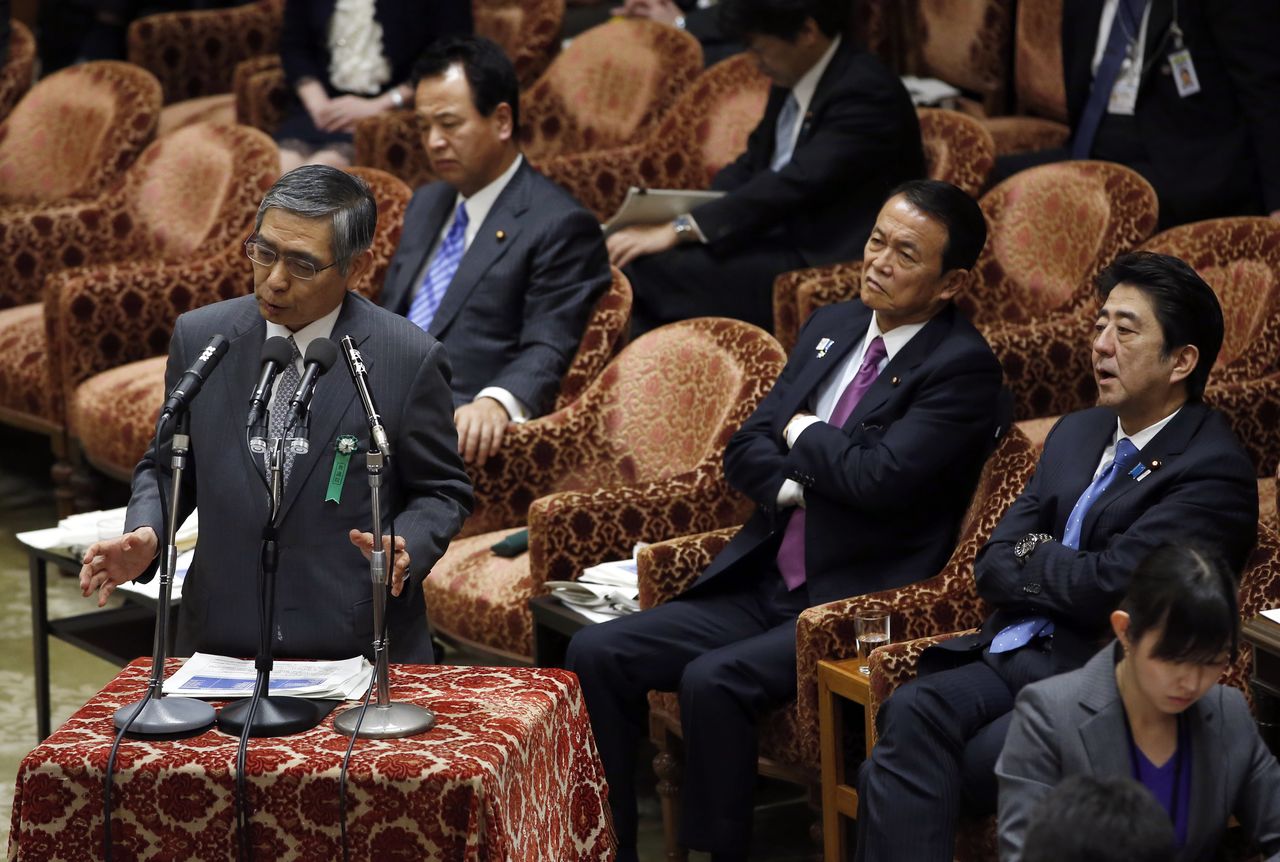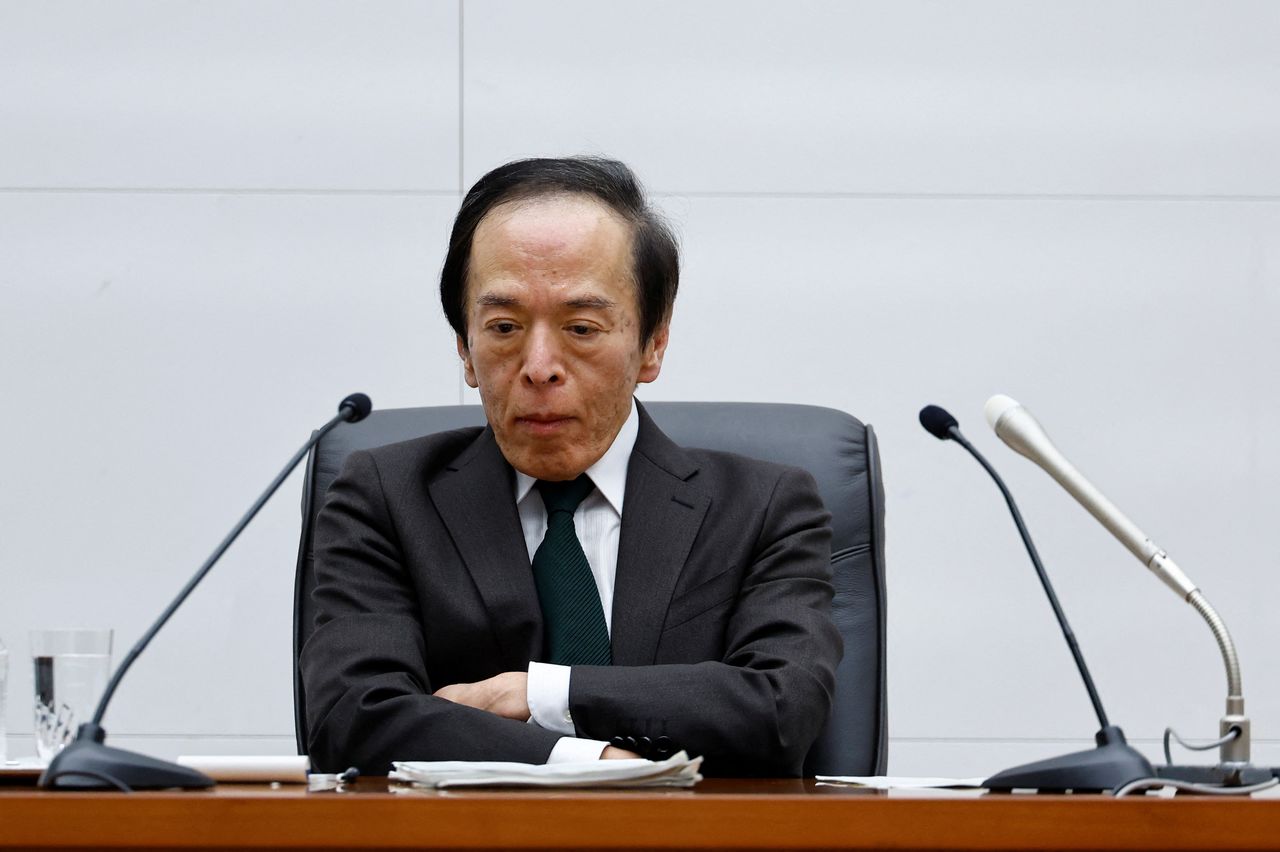
Negative Interest Rates No More: Bank of Japan Ends Decade of Covering for Kuroda Bazooka’s Misfires
Economy- English
- 日本語
- 简体字
- 繁體字
- Français
- Español
- العربية
- Русский
At its March 18–19, 2024, Monetary Policy Meeting, the Bank of Japan decided to put an end to its longstanding negative interest rate policy. It also halted its yield curve control guidance of long-term interest rates in Japan, along with its measures aimed at managing both short- and long-term rates. The sweeping decisions at the meeting also included an end to quantitative easing to expand the monetary base, such as through unlimited purchases of Japanese government bonds. With these steps, the central bank has adopted a far simpler approach to monetary policy, with guidance of short-term rates as its primary tool, at last ending the decade-plus massive easing experiment launched at the behest of Prime Minister Abe Shinzō in 2013.
Japan Brings Out the Reflationary Bazooka
The policy framework in place for most of the years since then has been labeled by the BOJ as “quantitative and qualitative monetary easing with yield curve control”—a convoluted name capable of confusing even market specialists, pointing to the meandering path taken on the way to determining this experimental approach.
Briefly stated, the approach had its roots in the reflationary philosophy spelled out by Prime Minister Abe after he returned to office in 2012, namely that Japan could dig itself out of deflation with monetary policy alone. Soon afterward Abe tapped the like-minded Kuroda Haruhiko, a former vice-minister of finance for international affairs at the Ministry of Finance, to serve as BOJ governor.

Bank of Japan Governor Kuroda Haruhiko, at left, appears before the House of Representatives Budget Committee on April 2, 2013, to declare that the bank will implement bold monetary measures to pull Japan out of a deflationary spiral. (© Reuters)
Kuroda swiftly set out on a course of easing measures “of a different dimension.” The BOJ’s massive purchases of JGBs to boost the monetary base, dubbed the “Kuroda bazooka,” arrived at the same time that the US Federal Reserve Board moved to normalize its own monetary policy, triggering a rapid depreciation of the yen against the dollar. The Nikkei index for the Tokyo Stock Exchange rose accordingly, and signs were evident that prices were also on the rise, but soon afterward, 2014 saw oil prices plummet. Consumer prices were mired in the doldrums again, and it was evident that the “different dimension” approach was not having the desired effect.
Endless Tinkering with the Engine
This should have been the time to walk away from this fruitless course, but the Kuroda BOJ obstinately clung to its easing policy. As a result of the bank’s massive purchases of government bonds, though, it soon found itself running up against the limit of JGBs it was ready and able to buy. With this as its only weapon, the bank was in danger of running out of ammunition for the battle; in 2016, it grudgingly took its next step, implementing a negative interest rate—a charge on excess reserves financial institutions had entrusted to the central bank. This would prove to be a destabilizing factor to the financial market, though, leading to falling share prices and an appreciating yen as players sought to avoid risk. As even the long-term central lending rate sank into negative territory, life and nonlife insurers found themselves in difficult positions, unable to effectively manage their assets. Finally, the BOJ took an additional step to prevent long-term rate drops, embarking on its program of yield curve control.
To sum up, monetary easing of a different dimension came first, but soon reached its limits; this was followed by negative short-term interest rates, and finally, to manage the side effects of this, by yield curve control, with the BOJ buying and selling bonds and other assets to maintain its targeted longer-term rate. This constant tinkering with the engine of monetary policy to cover up for the failures of the “Kuroda bazooka” produced the bank’s eventual stated policy, “quantitative and qualitative monetary easing with yield curve control.” This spring, it fell to Ueda Kazuo, Kuroda’s successor as governor of the central bank, to put an end to this.
Aiding Ueda in his decision to bring the interest rate back out of the negative band was a weakening yen that has bolstered corporate profits and notably high wage increases secured through the shuntō, or “spring wage offensive,” collective bargaining efforts this year. The falling value of the yen has been impacting consumers in Japan through higher prices for food and other items provided to a considerable extent through imports, but wages are now climbing at a pace to match these price hikes.
The BOJ is now confident that Japan can achieve the “virtuous cycle between wages and prices” that it views as contingent on steady and sustainable 2% growth in consumer prices. At his press conference following the Monetary Policy Meeting, Governor Ueda noted confidently that this year’s positive shuntō results had considerably influenced the bank’s decision, and that sustainable inflation of 2% led by these wage hikes appeared to be achievable.
All Eyes on the US Economy
In its statement released following the meeting, the bank “anticipates that accommodative financial conditions will be maintained for the time being,” stating that it will keep interest rates at a low level for the present, raising them cautiously as appropriate. Governor Ueda has said that the BOJ is prepared to alter its policy (by raising rates) in response to heightened risk of upward swings in price inflation; the market seems unconcerned about this at the moment though, with one official from a major Japanese bank noting that there is no sign of additional rate hikes on the horizon.
The last time the central bank raised interest rates was in 2006–7. In March 2006 it called off its quantitative easing measures, followed by a rate hike in July that year. If we follow the same pattern today, we should see rates go up this summer. There is no guarantee of this, though. As another Japanese banker points out, there remains the risk that the US economy could slip into recession. According to a manager at a foreign investment fund I talked to, the commonly held view is that inflation will peak in the United States, followed by a soft landing for the world’s largest economy; and indeed, US share prices remain solid for now. But the Federal Reserve Board’s vigorous rate hikes to date have served as a powerful brake on the economy, leading the head of a Japanese think tank to warn that we could still see a rapid reversal of the situation there.
If the US economy begins to sour, the Japanese economy will feel considerable downward pressure as well. The FRB, meanwhile, is likely to move swiftly to lower US rates, weakening the dollar against the yen. A strengthening yen would depress prices of imported goods in Japan. This in turn would make it harder for the BOJ to implement additional rate hikes, potentially leading to an even longer period of ultralow rates in Japan. Governor Ueda has stated that a more marked rise in the key price inflation rate would allow hikes in the short-term lending rate, but this view may be too optimistic.
Hard to Keep Things Going for Long?
Ever since the 1998 revision to the Bank of Japan Act largely freeing the institution from government supervision, the BOJ’s policy shifts toward more tightening have tended to be short-lived. In August 2000 the bank ended a period of zero interest, but in a matter of months the economic outlook was revised downward, and it was pressed to embark on a quantitative easing course in the following year. In 2006 the BOJ ended its QE program, but the next year the “BNP Paribas shock” unfolded, with the French bank falling victim to the US subprime mortgage market turmoil and shaking the global economy once again.
One former BOJ official tells me that the success or failure of monetary policy is “largely a matter of luck.” It seems certain that Governor Ueda will need to be fortunate indeed for his policy normalization course to proceed as he hopes.

Bank of Japan Governor Ueda Kazuo. (© Reuters)
(Originally published in Japanese on March 19, 2024. Banner photo © Pixta.)